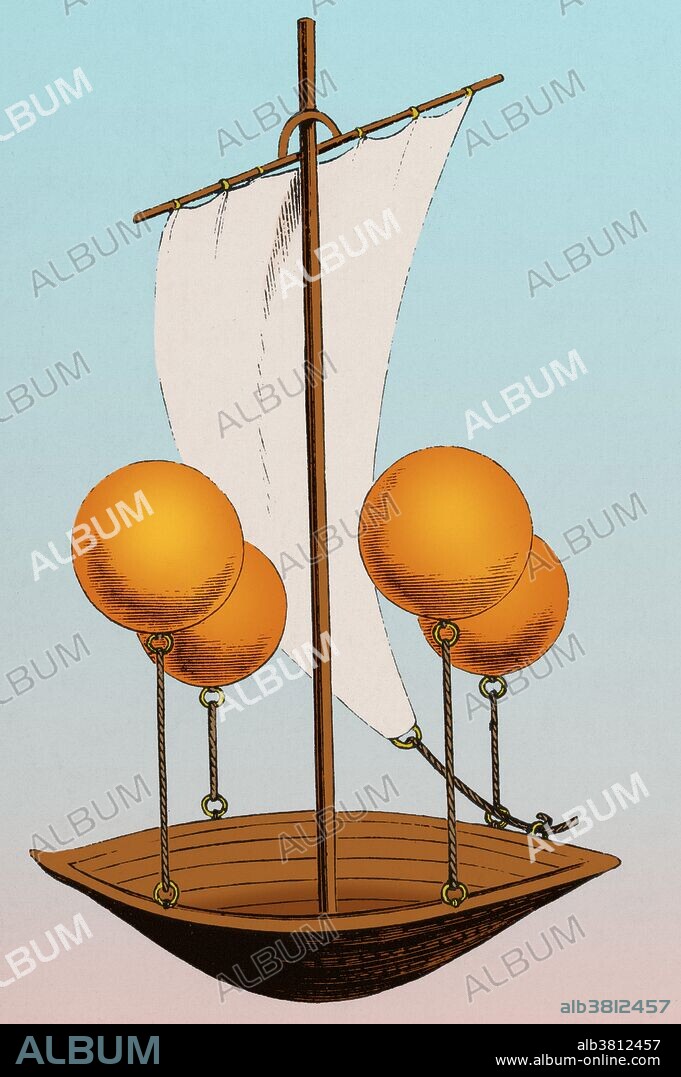alb3812457
Lana de Terzi's Flying Boat, 1670

|
Zu einem anderen Lightbox hinzufügen |
|
Zu einem anderen Lightbox hinzufügen |



Haben Sie bereits ein Konto? Anmelden
Sie haben kein Konto? Registrieren
Dieses Bild kaufen.
Nutzung auswählen:

Titel:
Lana de Terzi's Flying Boat, 1670
Untertitel:
Siehe automatische Übersetzung
Francesco Lana de Terzi (1631 - February 22, 1687) was an Italian Jesuit priest, mathematician, naturalist and aeronautics pioneer. He was the first to sketch the concept for a vacuum airship and has been referred to as the Father of Aeronautics for his pioneering efforts. In 1663, encouraged by the experiments of Otto von Guericke (Magdeburg hemispheres), he developed an idea for a lighter than air vessel. His design had a central mast to which a sail was attached, and four masts that had thin copper foil spheres attached to them: the air would be pumped out of the spheres, leaving a vacuum inside, and so being lighter than the surrounding air, would provide lift. The airship would be steered like a sailing boat. Each sphere would have had a diameter of 24 feet 7 inches. Terzi calculated that the weight of a sphere would be 396 lbs. He calculated that the air in the sphere would weigh 638 lbs, and would provide enough lift to carry 6 passengers. In 1670, he published a book titled Prodromo, including a chapter which contained the description of a flying ship. A model of his invention is on display at the Smithsonian in Washington, DC.
Bildnachweis:
Album / Science Source
Freigaben (Releases):
Bildgröße:
2642 x 3972 px | 30.0 MB
Druckgröße:
22.4 x 33.6 cm | 8.8 x 13.2 in (300 dpi)
Schlüsselwörter:
FLIEGEND • FLUGMASCHINE • FLUGZEUG • JESUIT • JESUITEN • JESUITENORDEN • JESUITERMOENCHE • LUFTFAHRT • LUFTSCHIFF • LUFTVERKEHR • MOENCHE, JESUITEN • ORDEN: JESUITEN
 Pinterest
Pinterest Twitter
Twitter Facebook
Facebook Link kopieren
Link kopieren Email
Email
